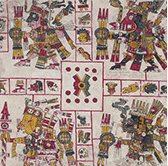Printed Books Department
The Printed Books Department looks after, and makes available to scholars, the Library’s collections of printed books, as well as its collections of prints and drawings and of non-book materials; it deals with acquisitions of new publications and with exchanges of published material with other institutions; it selects from the books which are donated to the Library and receives those which are donated to the Holy Father; it catalogues the books which enter the collections, ensures that it is adequately preserved in the stacks or assigns it to the open shelves in the Reading Rooms. The Printed Books Department, much like the Manuscript Department and the Numismatic Department, assumed its present form over the course of many years in a process of constant reorganization which was motivated by the need to adapt the Library to the standards of the modern academic world and those of the latest technological developments.
THE SECTIONS OF THE DEPARTMENT
The Printed Books Department is made up of various sections which serve to put the collected materials at the disposal of readers. The processes of selection, acquisition and description of the resources of the Library are realized in the daily work of the various sections.
Accessions Section is the most important purchasing organ of the Library. All book and other materials which enter the library pass through here, regardless of the means of acquisition (purchase, gift, exchange or copyright). The Section performs all the administrative tasks required by the various means of acquisition; keeps the accounts; maintains a registry of all acquired items; and manages the procedures for exchanges with other institutions: these have been recently reactivated and have become an important means of increasing the collections.
Catalogue Section receives all acquired items from the Accessions Section and catalogues them according to the international ISBD standard in
MARC 21 format. It also works towards cataloguing the historical “closed” collections which are already in the Library and have not yet been treated. The Accessions and Catalogue sections work closely together,
since together they have the important task of making available to readers both the newly acquired publications and the material which is already present or which is destined to enrich the collections.
The Printed Books Reading Rooms and Stacks Section deals with the care and the supervision of the Printed Books Reading Rooms (Sala Leonina minore, Sala Periodici) and of the relevant stacks; it provides readers with the necessary assistance in finding books on the open shelves and in ordering them from the stacks, as well as in returning them to their place.
Rare Books Section, which has only recently become operative, encourages the study of the history of books by coordinating the specialized cataloguing of old books, preparing more detailed catalogues and making available to readers the relevant repertories and publications.
The Collection of Engravings is the artistic collection of the Library. In addition to various types of prints and drawings, it
also houses a large number of drawings, as well as the Photographic Collection. These collections require special methods of preservation, as well as specific professional skills, especially for their cataloguing,
which is one of the main tasks of the Section. In the Catalogue of Graphic materials and Art objects, every description is accompanied by a low-resolution reproduction of the item.
The Non Book Materials Section deals with the use of the non-book materials which are kept in the Library.
COLLECTIONS OF PRINTED BOOKS IN THE VATICAN LIBRARY
The Vatican Library possesses about one and a half million printed books, predominantly old and rare books, including over 8,600 incunabula; tens of thousands of sixteenth-century editions (which are included in EDIT16, the ICCU's census of Italian sixteenth-century books) and even more seventeenth-century ones (particularly in the Barberini and Chigi collections), as well as seventeenth- and eighteenth-century books.
The Library preserves two types of
The computerization of the Printed Books Catalogue (OPAC) was begun in 1985; since then, no further additions have been made to the card catalogue. In the 1990’s, the card catalogue was converted into
electronic format, although this work is not yet entirely finished. Since then, the Library had endeavored to integrate and to improve the OPAC. Since 1994, the OPAC is publicly available on the internet, as is
the Catalogue of Graphic materials and Art object which is maintained by the relevant Section.
The Bibliographic Information Office plays the role of a public relations office. It responds to questions which are sent by mail or, more often, by e-mail, regarding any matter pertaining to the Library,
but it also serves as a reference help desk, directing readers to the bibliographical tools which are most useful for their research. It also provides assistance in the use of the catalogues and inventories.
CONTACT DETAILS
- DIRECTOR Dr. Andreina Rita: contact by email
- Telephone: +39/06698.79491
- Fax: +39/06698.79437
- OFFICE: contact by email





